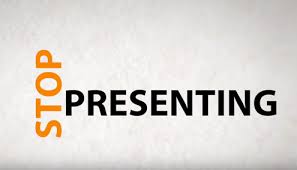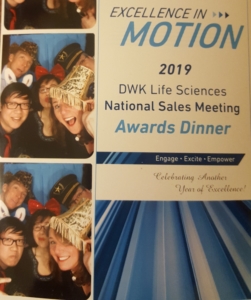By one definition, process is “a series of steps with input and output.” Whether you are aware of it or not, process impacts our lives from the moment we are born. My kids go through a process to get out the door to school every morning. The orange juice they drank also went through a process to get to the table. Their teachers go through the process to advance their learning over a year’s time. All these processes are designed to get a predictable outcome.
In business, a well-defined sales process can lead to year in, year out predictable revenue. Wall Street rewards public companies based on their ability to annually predict their earnings. Some miss wildly and some are spot on. How can this be achieved? Look to the sales process, the organizational engine that generates the revenue. Here are few ways that sales process can help to generate revenue more effectively:
1. Use objective criteria – once defined, a sales process provides objective criteria and the framework to make decisions. Say a sales group is underperforming. What numbers or facts are available through sales process to pinpoint the problem? From the pipeline or opportunity review standpoint, there are specific data points you can rely on for analysis. Is it in the types of clients you are calling on? Are your sellers getting stuck in prolonged evaluations that never yield a decision? Or is it in the close ratio? It may not matter where the problem is, what really matters is that you are able to look at each problem objectively with certain criteria and then correct the course.
2. Allocate human and technological resources – How much should we spend to hire and train people? Or how much should be invested in CRM or other sophisticated software tailored to my business? As you pinpoint where bottlenecks exist, the lens you look through will help to determine if people or technology is needed to help improve. On the front end of the process, many solid lead generation services exist to help identify qualified opportunities. It’s my experience that the challenges towards the end of the selling process come in the form of the skills of the seller, or ability to effectively negotiate and close.
3. Increase visibility into new areas for growth – This may be viewed as an ethereal, strategic choice based on gut feel and economic trends, but hard data is needed for this process as well. Sales process delivers the hard data on what types of customers are attracted to your product, and why they are attracted. If this data not captured in a consistent way, then the top management loses connectivity and an ability to analyze trends with proper perspective.
Agree or not, process is King. I have this discussion with sales professionals from all industries . We learn how each person implements process in their industry, what’s working and what’s not. Broaden your understanding, challenge your thinking and, hopefully, define or refine your sales process. Tonight at home, however, I’ll be taking my queues from the process Queen. When the process Queen is happy we are all happy. It’s also my home recipe for predictable success.
Flannery Sales Systems (www.drive-revenue.com) helps organizations define or refine and implement a repeatable sales process. Increasing revenue through sales process is the ultimate goal. Flannery Sales Systems works with a broad cross section of industries and we are confident we can enhance your results.



 There’s no set formula or silver bullet for sales success. If there were, sales would be a lot easier! But neither should sales be attempted in a haphazard manner. A set sales process can help to shorten sales cycles and improve productivity, while also giving managers insight into their salespeople’s performance.
There’s no set formula or silver bullet for sales success. If there were, sales would be a lot easier! But neither should sales be attempted in a haphazard manner. A set sales process can help to shorten sales cycles and improve productivity, while also giving managers insight into their salespeople’s performance.  In three separate conversations, I was contacted by 2 sales representatives and one entrepreneur who asked to provide a critique of a presentation that they were taking to a prospect. While the circumstances around each were different, there was one common challenge I identified following each conversation-information around a solution, product, or service was being presented way too soon! None of the three understood how the prospect ran their business without the recommendation that they would prescribe. And only one realized how this approach would lower their chances of a successful outcome, even if they did (for some strange reason) win the business.
In three separate conversations, I was contacted by 2 sales representatives and one entrepreneur who asked to provide a critique of a presentation that they were taking to a prospect. While the circumstances around each were different, there was one common challenge I identified following each conversation-information around a solution, product, or service was being presented way too soon! None of the three understood how the prospect ran their business without the recommendation that they would prescribe. And only one realized how this approach would lower their chances of a successful outcome, even if they did (for some strange reason) win the business.
